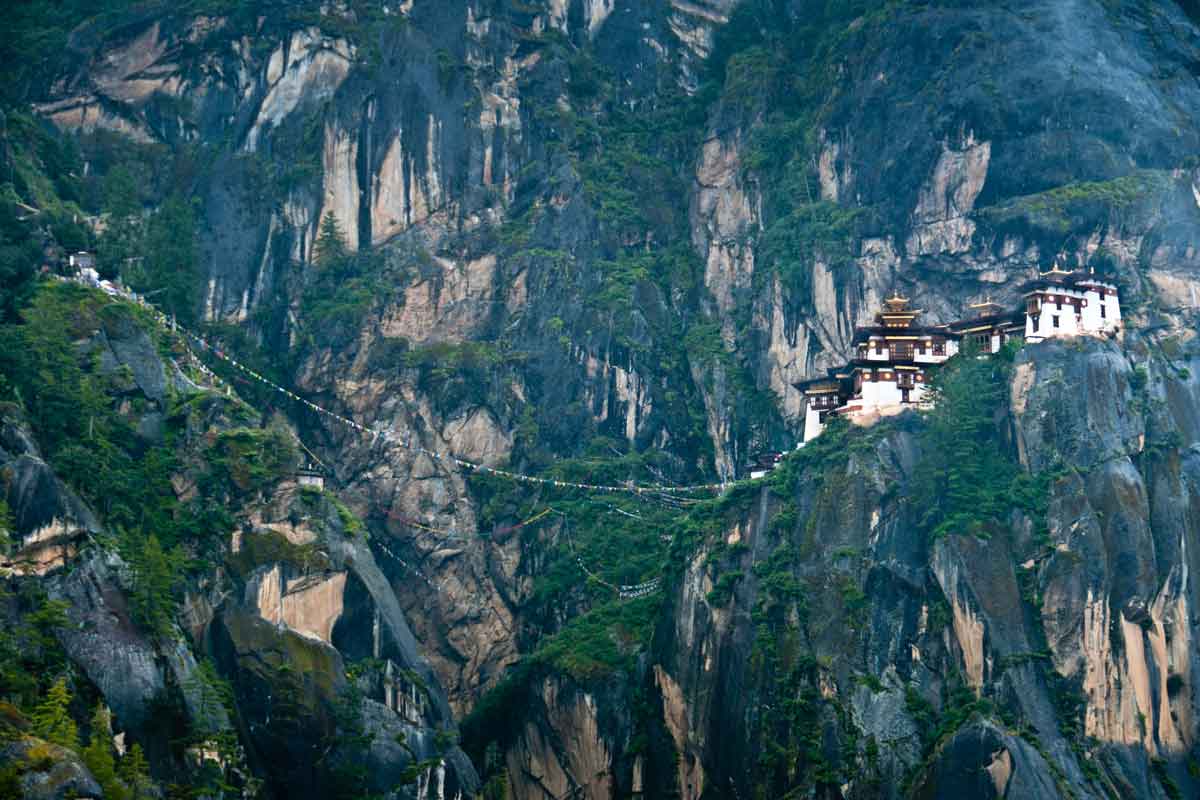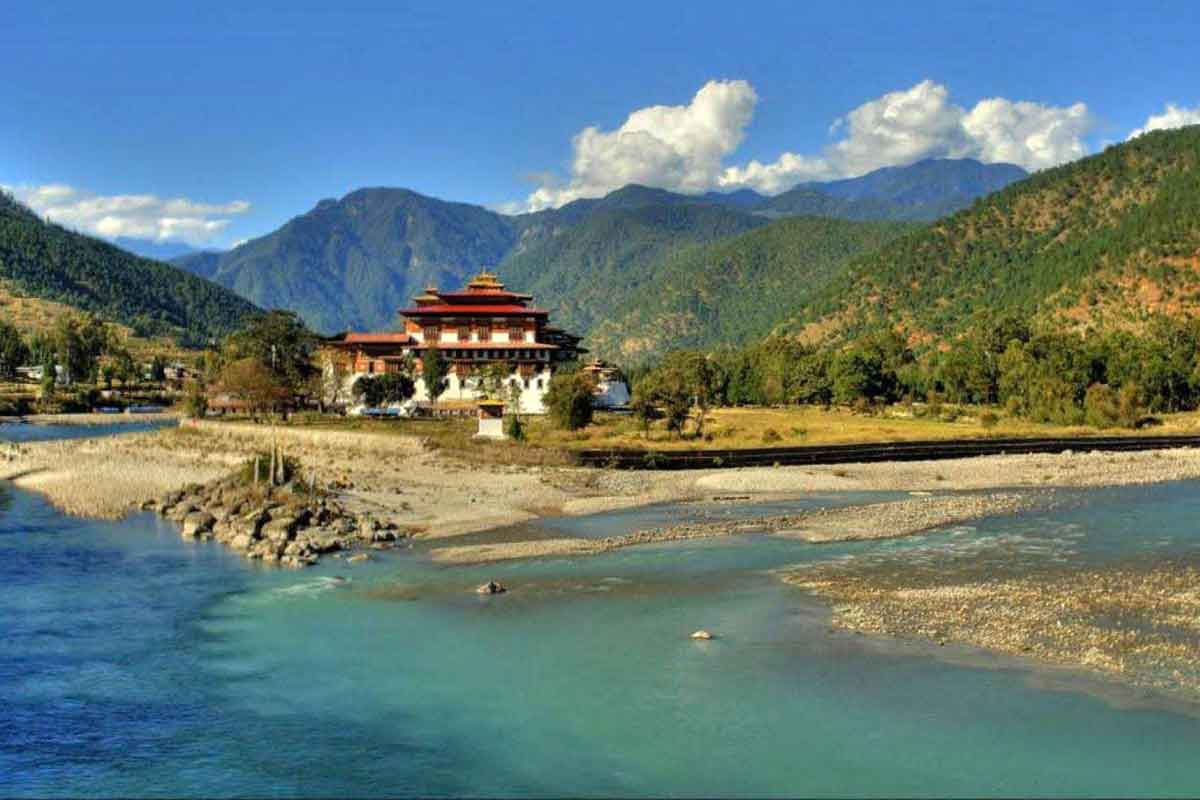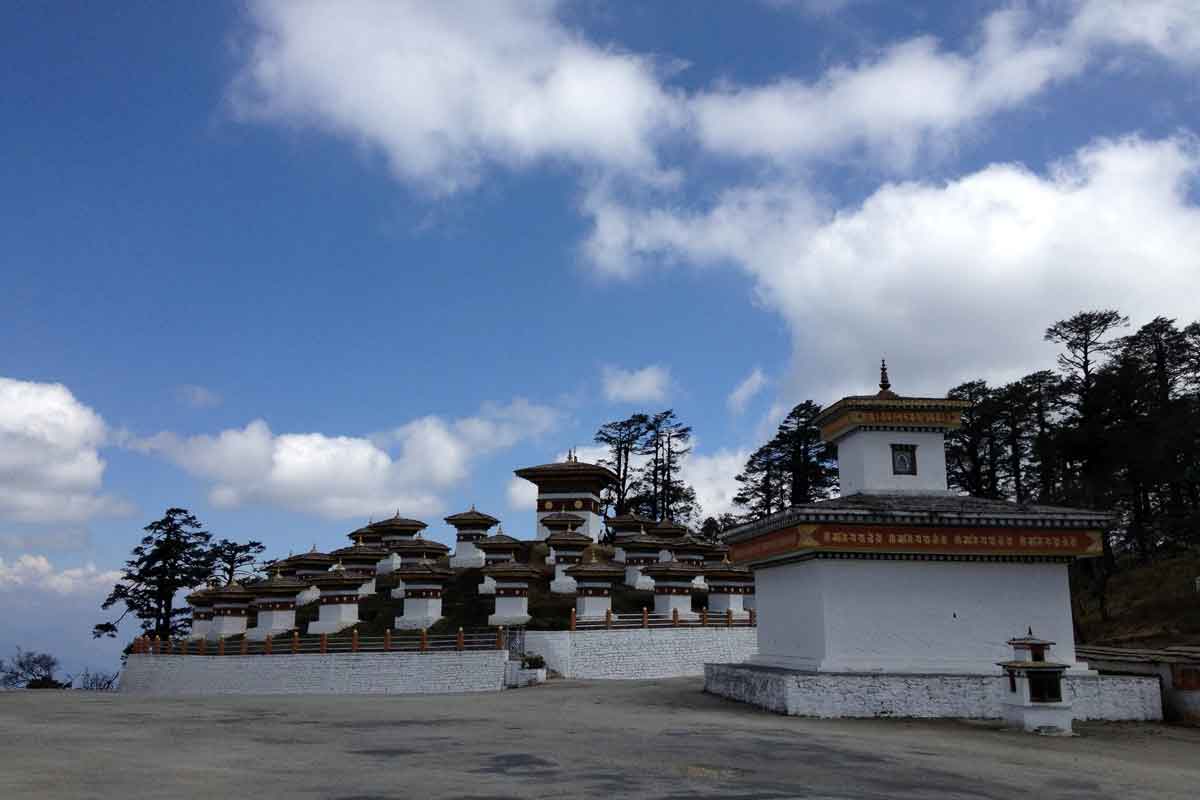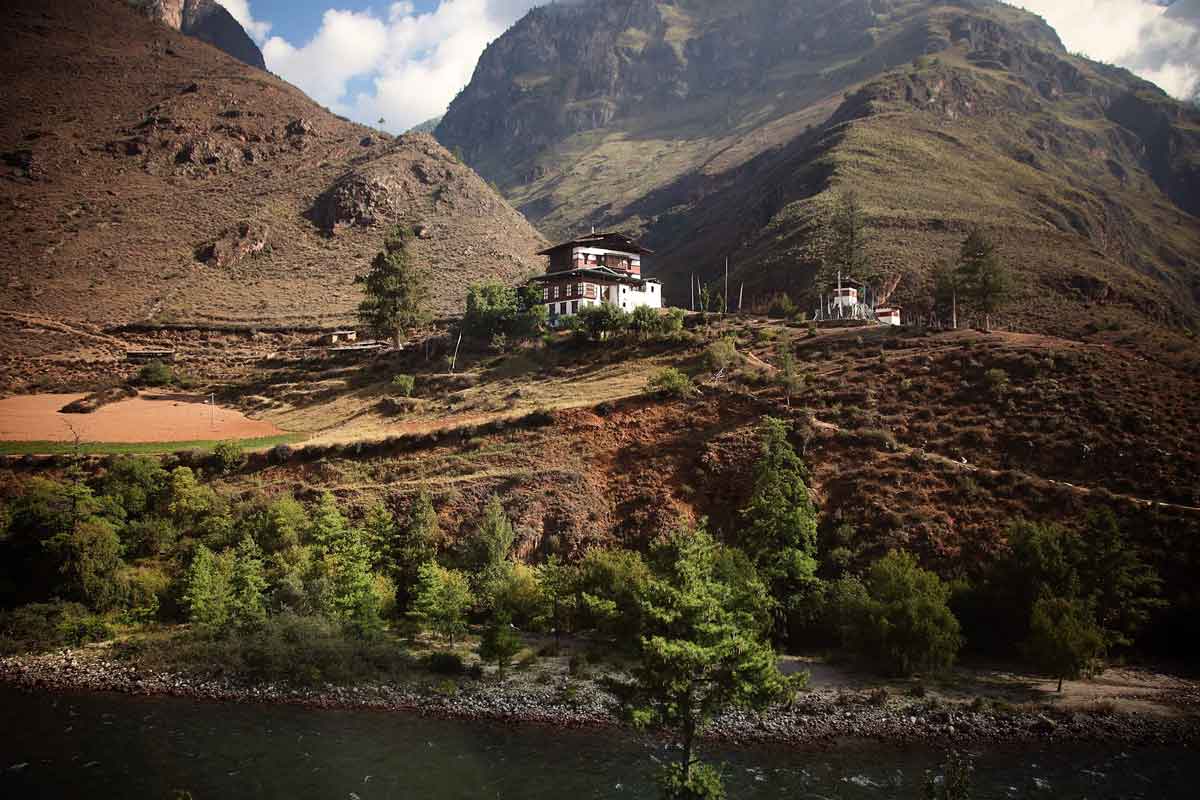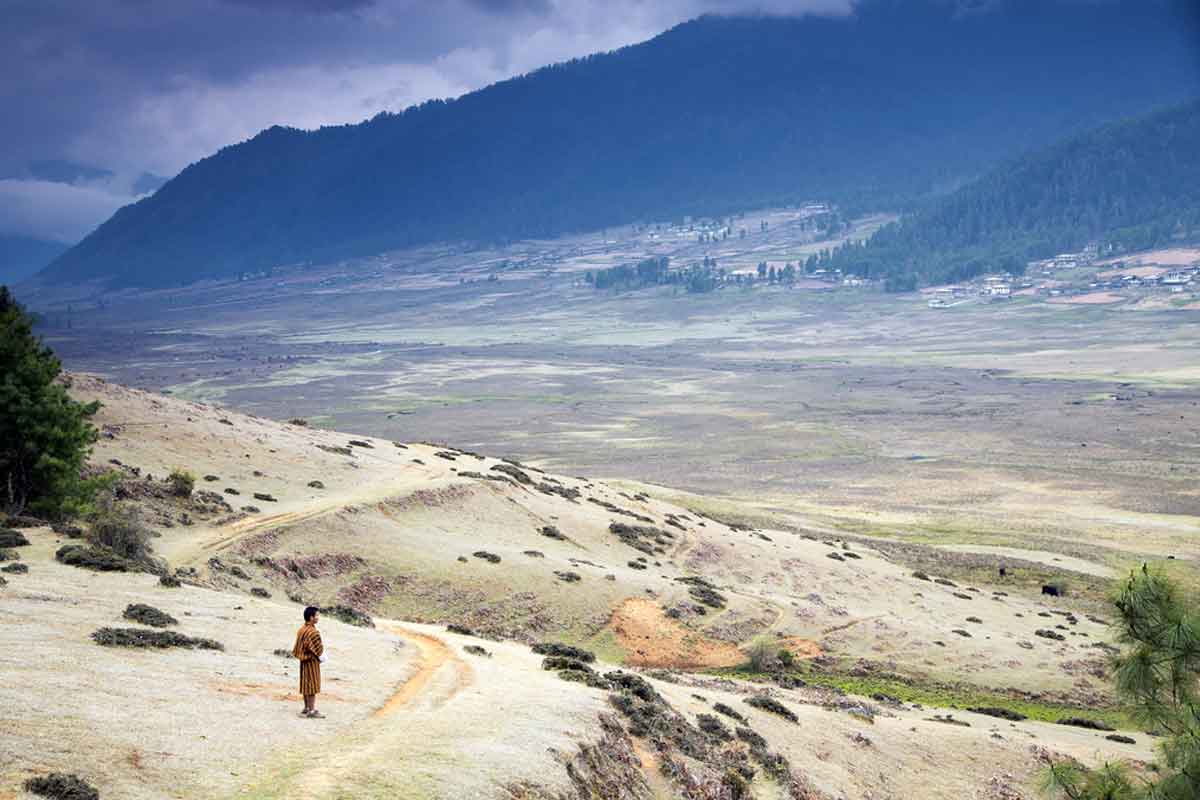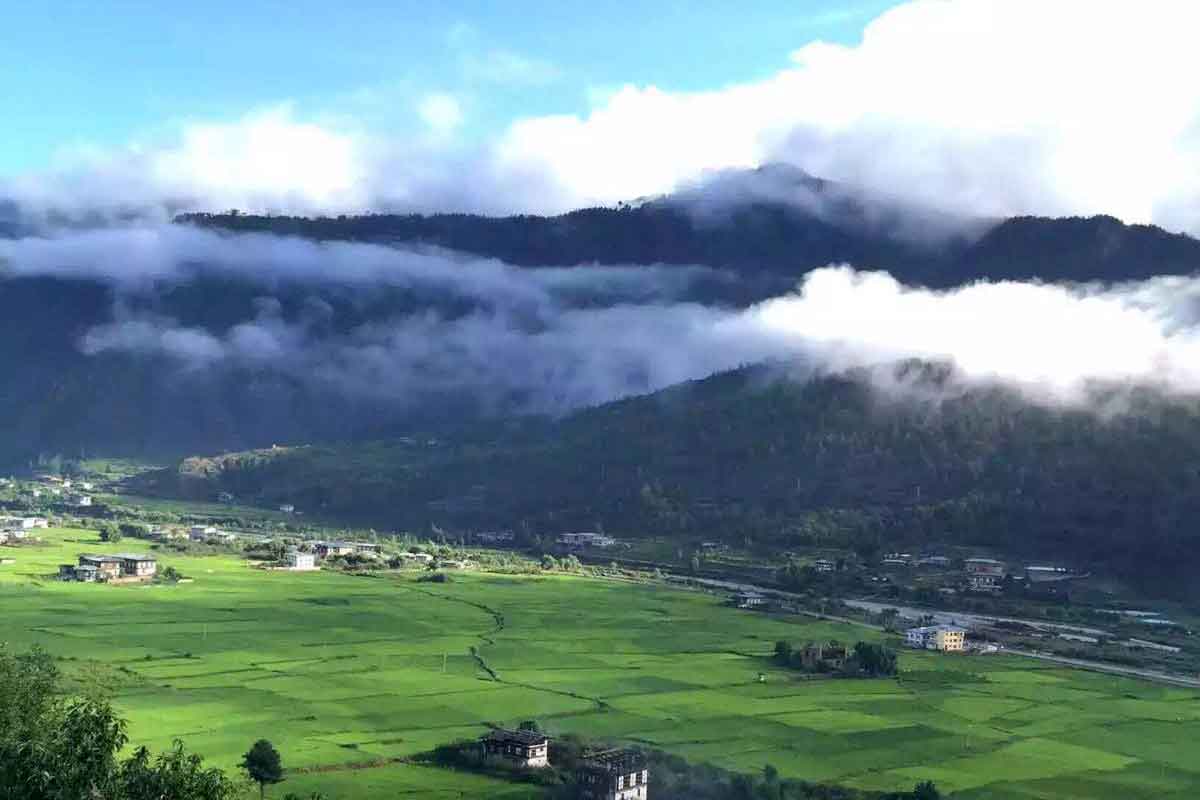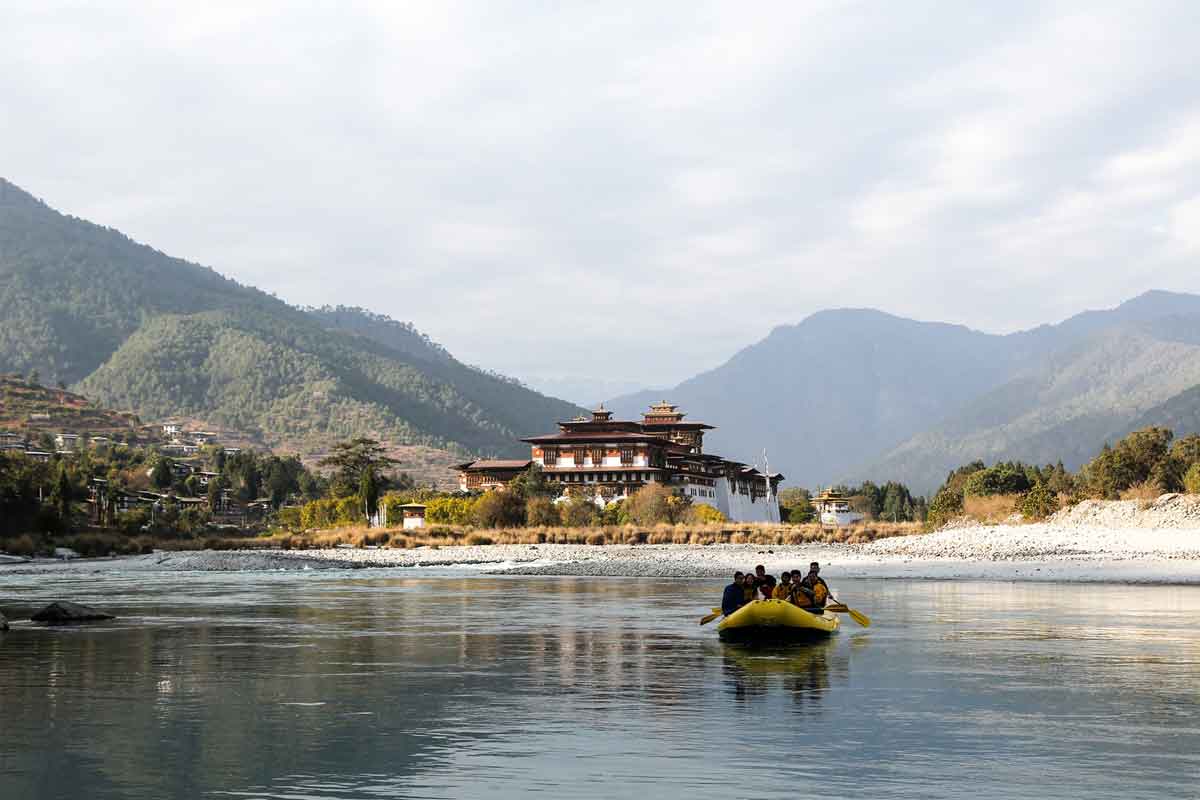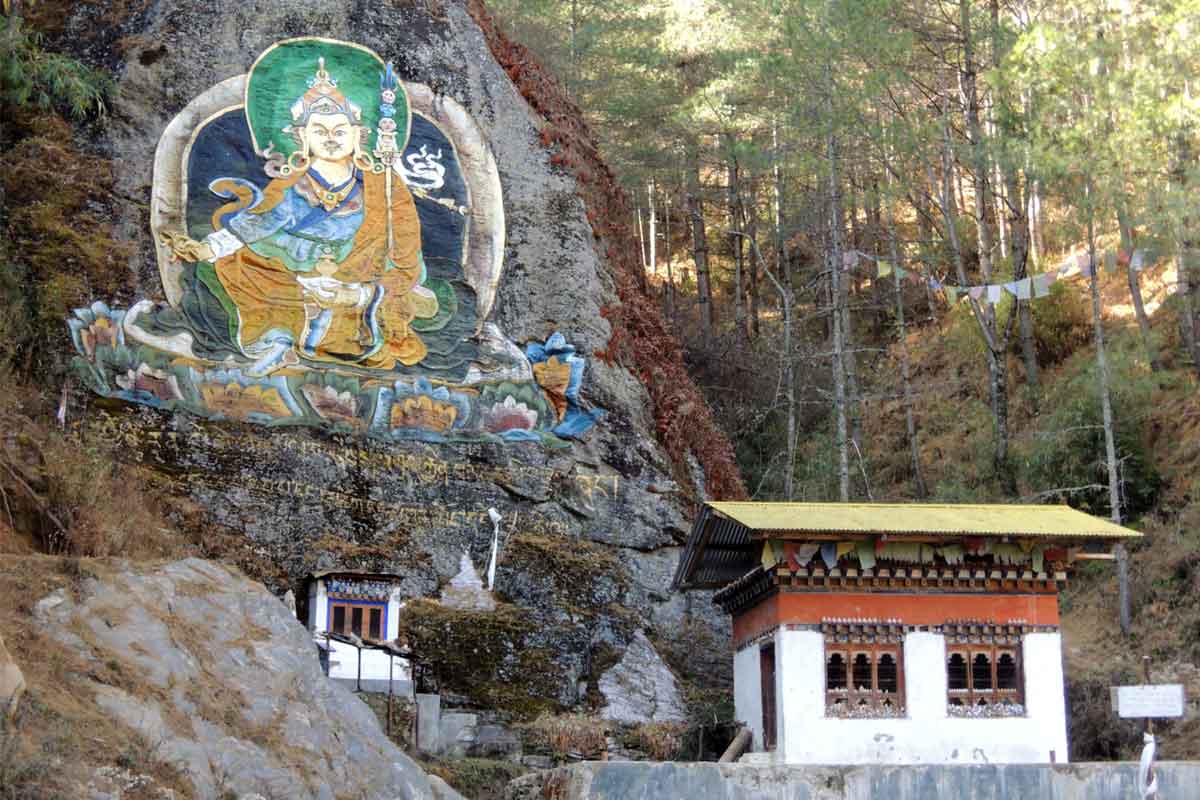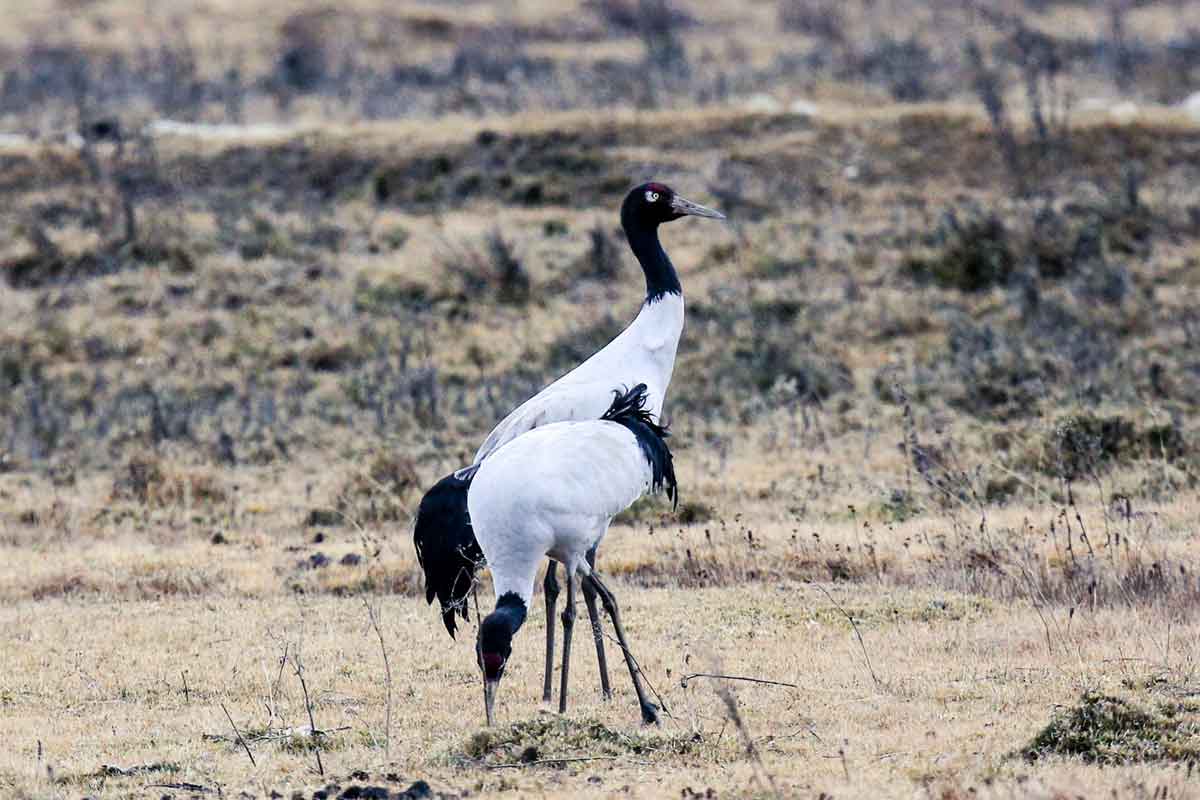Trekking Experts presents Bumthang Cultural Trek which is specially designed to discover all the glimpse of Bhutan with in a tour. This trek includes most the highlighted parts of Bhutan such as Paro, Thimpu, Punakha and Bumthang. Bumthang includes Jakar Dzong- the administrative center of the valley; Jambay Lhakhang-one of the oldest monasteries in Bhutan, dating from the introduction of Buddhism in Bhutan; and Kurjey Lhakhang-one of the most sacred places, because Guru Rinpoche, a great 8th century spiritual master left his body imprint on the cave when he was meditating. Additionally you can visit Tamshing Lhakhang-a treasure house of interesting religious Buddhist paintings.
Also during the trekking you will visit Ngang Lhakhang- a Buddhist monastery in the Choekhor Valley of central Bhutan. In Thimpu, you can visit the King’s Memorial Chorten (built in memory of the third King of Bhutan who reigned from 1952-1972), Changgangkha Monastery, the radio tower (for a great view of Thimphu Valley and the Thimphu Dzong), and the zoo, which contains the national animal of Bhutan and will visit the nunnery temple, the National Library (which houses ancient manuscripts), and the School of Arts and Crafts (also known as the painting school) and other parts of Thimpu.
Excellent overview of the Kingdom Of Bhutan
Trekking in pristine valley of Bhutan
Trekking in one carbon-free environment
Staying in comfortable hotel and guesthouses
Visit the most scenic valleys of Bhutan: Paro, Thimphu, Punakha and Phobjikha
Explore the wide varieties of flora and fauna including rhododendrons in the spring and blacked cranes in winter
Upon arrival in Paro, a charming town located in western Bhutan with only a few streets and brightly painted wooden shops. If skies are clear en route, we’ll be treated to views of the massive eastern Himalaya peaks, including Kangchenjunga, which at 28,169 feet is the world’s third-highest mountain, and 24,035-foot Chomolhari, Bhutan’s holy mountain. Your guide will meet you on arrival and transfer you to the hotel. You will have time to-freshen up and have lunch before setting out to explore. Paro lies on the banks of the Pa Chu (chu means “river”), which wends through the bucolic Paro Valley, once the hub for trade with Tibet. Your first stop is the Paro Rimpung Dzong. In Bhutan dzongs serve as centers for administrative and monastic life; they house the offices of local government and the resident monk body. In days of yore—during Tibetan invasion or wars between the valleys—dzongs also acted as strongholds, protecting their vale’s inhabitants. On our trip we’ll notice that Bhutanese men and women dress more formally when going into a Dzong, much as someone in the West might spruce up to attend church or court. Next you’ll ascend a short hill behind the Dzong to reach the Ta Dzong, a circular fortress that once protected this valley from Tibetan invasion. The impressive watchtower commands sweeping views of the valley below. It also houses Bhutan’s National Museum, which, since 1968, has been the home of the country’s most cherished relics.
 Mandala Resort
Mandala Resort Dinner
Dinner Hours Walk
Hours Walk meter
meterToday you’ll drive up the Pa Chu to Drukyel Dzong, a ruined fortress at the head of the valley. This fortress, now a burned-out shell, was once strategic in Bhutan’s defense against Tibetan invasion. The sacred summit of Mt. Chomolhari (24,500 feet) is visible beyond the Dzong if weather is clear. There is a lovely trail that descends from Drukyel Dzong and meanders through cultivated fields and isolated farming communities near the Pa Chu. It takes approximately two hours to hike from the dzong back to hotel. After lunch you can visit Kyichu Lhakhang, which was built around 750 CE by King Songtsen Gampo of Tibet, and is one of the two oldest temples in Bhutan (the other is Jambay Lhakhang in Bumthang). Legend has it that a giant ogress sprawled across Bhutan and eastern Tibet to prevent the spread of Buddhism. To subdue her powers, the king constructed 108 temples; Kyichu Lhakhang is believed to be holding down her left foot. If time and energy levels permit, it is a pleasant walk back to hotel.
 Mandala Resort
Mandala Resort Breakfast/Lunch/Dinner
Breakfast/Lunch/Dinner Hours Walk
Hours Walk meter
meterThis morning you begin your journey toward central Bhutan. A winding road takes you along the Pa Chu to its confluence with the Wang Chu, which you follow into the Thimphu Valley. You’ll pass by Simtoka, a dzong built in 1629 by Shabdrung Ngawang Namgyal, who is known for unifying Bhutan. Your drive continues east across 10,223-foot Dochu La, which in good weather offers expansive views encompassing 200 miles of Himalayan peaks. As you travel down from the pass, alpine vegetation gives way to semi tropical greenery and a landscape featuring bananas, poinsettia, and cactus. After a few hours on the road, you’ll reach Punakha, the ancient capital of Bhutan. Before settling in for the evening, you stretch your legs on a short hike to Chimi Lhakhang, a small temple dedicated to Drukpa Kunley, affectionately called the “Divine Madman.” He is one of Bhutan’s favorite holy men in spite of—or because of—his irreverent and often ribald methods of teaching the dharma some 500 years ago. The valley is peppered with traces of his influence, and villagers still enthusiastically recount the legends of his exploits. Chimi Lhakhang is also known as the fertility temple; women who are having trouble conceiving come here to pray and receive the resident lama’s blessings, which he punctuates by tapping the women on the head with a wooden phallus.
 Meripuensum Resort
Meripuensum Resort Breakfast/Lunch/Dinner
Breakfast/Lunch/Dinner Hours Walk
Hours Walk meter
meterToday you’ll set out on a short hike to Punakha Dzong. There are a few rather steep sections at the beginning of the hike, but overall this morning’s walk is relatively easy. Passing a few isolated farmhouses and their adjoining terraces, you walk through a terrain sparsely forested with Chiri pine. The trail gradually descends following the contour of the ridge directly west of the Mo Chu. The final approach to the dzong affords wonderful views, with a backdrop of snow-capped peaks in the distance. The valley is dominated by the impressive Punakha Dzong, set at the confluence of the Mo and Po (or “female” and “male”) Rivers. Built by Shabdrung in 1637, this massive fortress is one of the holiest in Bhutan and holds some of the country’s most sacred relics, including Shabdrung’s preserved remains. The central monk body moves from Thimphu to Punakha every winter to take advantage of Punakha’s temperate climate. After lunch you’ll drive a short distance north of the dzong for a hike up to Khamsum Yueley Namgyel Chorten. This jewel-like structure can be seen poking through the trees beyond the river. It is dedicated to the current king and was built by his mother. There are several levels to this pagoda-like structure, each of which is densely packed with protector deities. There is a roof deck on the top floor which offers spectacular views of the valley. The moderate hike takes approximately three hours in total.
 Meripuensum Resort
Meripuensum Resort Breakfast/Lunch/Dinner
Breakfast/Lunch/Dinner Hours Walk
Hours Walk meter
meterToday you’ll leave for the stunning Phobjikha Valley, a drive that should take approximately 3 hours. The route climbs from the subtropical greenery of Punakha to alpine regions featuring vast hemlock and rhododendron forests. The goal is to hike into the valley, enjoying stunning views that most people miss when they enter the valley by road. Just beyond the summit of Pele La (10,944 feet) sits the village of Longtey and the start of our trail. You’ll proceed through open pasture of shrub bamboo (where we may need to dodge the infrequent yak), cross a stream, and begin a gradual ascent toward the pass. Just around the first bend, we come to a collection of about eight houses which form the village of Longmey. Beyond Longmey, the trail climbs gradually and steadily toward the pass under a canopy of moss-draped hemlock and rhododendrons. After about 2 to 3 hours of hiking we reach the summit. From here the entire panorama of Phobjikha Valley opens before you. You’ll descend steeply through pastures of shrub bamboo passing the Khumbu Gompa, a small meditation complex that sits atop a hill to the right of your trail. The first collection of houses you approach is the village of Khumbu. Your vehicle meets you here and you proceed over the somewhat rough valley road to your lovely guesthouse.
 Yo Loe Koe Guesthouse
Yo Loe Koe Guesthouse Breakfast/Lunch/Dinner
Breakfast/Lunch/Dinner Hours Walk
Hours Walk meter
meterPhobjikha is a broad, glacier-carved valley surrounded by pine forests. Black Mountain National Park, of which Phobjikha is a part, links up with Royal Manas National Park in southern Bhutan, creating a combined reserve that encompasses alpine, temperate, and subtropical ecosystems, and harbors a wide array of flora and fauna. Among its inhabitants are wild boar, deer, clouded and snow leopard, Himalayan black bear, red fox, and, from November through March, black-necked cranes. About 500 of these rare birds—fewer than 11,000 exist in the world—migrate from Tibet to roost here for the winter. If our timing is right, we may spot some of these gray-bodied visitors. Today we embark on a short hike to Gangtey Gompa, a 17th-century monastery overlooking the lush Phobjikha hills and wetland. Pema Lingpa, the famous 14th century blacksmith and terton (treasure finder) from central Bhutan, chose this site for the gompa; its head lama is an incarnation of this legendary lama. Within the complex you’ll find a central monastery, meditation hall, school, monks’ quarters, and a courtyard. From the gompa we’ll hike to the surrounding villages, through forests and farmlands, basking in alpine scenery that is typical of Bhutan’s high country.
 Yo Loe Koe Guesthouse
Yo Loe Koe Guesthouse Breakfast/Lunch/Dinner
Breakfast/Lunch/Dinner Hours Walk
Hours Walk meter
meterYou’ll enjoy a leisurely morning in this serene valley before departing for Wangdiphodrang (commonly called Wangdi), about a three-hour trip. Wangdiphodrang is a small market town known for its bamboo work, slate carvings, anddzong, which was built in 1638 and towers over the valley. Unfortunately, the dzong burned to the ground in 2012, but plans for reconstruction are underway. Today’s hike commences at Tike Zam (bridge), from where the trail ascends steeply out of the Dang Chu river valley. The goal of today’s hike is the small village of Samtengang, a lovely community perched at top ridge that enjoys panoramic views of the adjacent valleys. The trail we’ll be using is the old route used by monks from Gangtey Gompa, who commuted between their summer residence in Gangteng and their winter residence at Chitokha Monastery. The climb from Tike Zam to Samtengang is steep, and will take approximately 2 hours. Across the valley from Samtengang to the north sits the village of of Chungsakha. Another two hours of hiking takes us from Samtengang to Chungsakha. The trail follows the contours of the valley, skirting terraced fields and the occasional manor house before descending to a bridge across the river. After crossing the bridge we begin a gradual climb to Chungsakha, where your vehicle will be waiting to drive you to our accommodations for the night.
 Yu-Gharling Guest House
Yu-Gharling Guest House Breakfast/Lunch/Dinner
Breakfast/Lunch/Dinner Hours Walk
Hours Walk meter
meterAn early-morning departure takes you back across Dochu La to Thimphu. At the summit of Dochu La you disembark for a hike to Lungchuzekha Gompa. It takes approximately two hours to reach the small gompa. After visiting the monastery you descend via the villages of Trashigang and Hongtsho, another three or so hours of pleasant hiking. Your vehicles meet you where the trail crosses the road and you finish the drive to Thimphu. Later you’ll arrive in Thimphu, Bhutan’s capital and largest city. Home to the government, royal family, and largest city. Home to the government, royal family, and the head offices of international aid organizations in the country, Thimphu is a mix of Himalayan and Western sensibilities—internet cafés and disco.
 Dorji Elements Thimphu
Dorji Elements Thimphu Breakfast/Lunch/Dinner
Breakfast/Lunch/Dinner Hours Walk
Hours Walk meter
meterThis morning’s hike leads us to Tango and Chiri Gompas and southward along the riverbank to Dordena and Dechencholing. The hike up to Tango and Chiri Gompas is a short but serious climb making the setting of these monasteries truly spectacular. Special permission is required to enter the main temples and usually we can arrange this but entry is never guaranteed as the decision is made by the lamas and head monks residing there. After exploring the gompa, you’ll continue with an easy hike following a trail on the east side of the river back from Tango and Cheri Gompas takes about one hour. The first 20 minutes lead through mixed forest of oak and pine on a well-maintained trail. Once we emerge from the forest, the views down the valley abound. We pass many ruined or abandoned farmhouses in varying states of decay. Today’s hike should take approximately five hours in total. Back in town this afternoon you can make excursions to the handicrafts school, National Textile Museum, Drubthob Gompa nunnery, or a paper factory. If you are lucky, you may also catch a spirited archery match in progress. Archery is Bhutan’s national sport (and obsession). Tournaments often last for days at a time and are highly entertaining events.
 Dorji Elements Thimphu
Dorji Elements Thimphu Breakfast/Lunch/Dinner
Breakfast/Lunch/Dinner Hours Walk
Hours Walk meter
meterToday you’ll hike from your hotel up to the game enclosure above the city. The walk takes you through Thimphu’s most prestigious neighborhood, the Mothithang area. The game enclosure houses the curious Bhutanese takin, the country’s national animal which taxonomists believe is distantly related to the musk ox. In late afternoon we drive two hours to Paro where you will enjoy dinner at the Hotel or local restaurant.
 Mandala Resort
Mandala Resort Breakfast/Lunch/Dinner
Breakfast/Lunch/Dinner Hours Walk
Hours Walk meter
meterToday you’ll visit the most awaited Taktsang Monastery. Taktsang Monastery (known as Tigers Nest) is one of the most scared and revered monasteries in the Kingdom and all Bhutanese Buddhists desire to make a pilgrimage visit to Taktsang at least once in their lives. Each step taken towards the monastery gains merit points towards their future. This morning you too will have the opportunity and good fortune to take a pilgrimage hike to the Taktsang Monastery (Tigers Nest). Choose between a 2 hour round trip hike to the monastery viewpoint or a longer 5 hour hike into the Monastery itself. Tigers Nest clings impossibly to a cliff of rock at over 1000 metres above the valley floor and where Guru Rinpoche flew on the back of a tigress to subdue the local demons followed by 3 months meditation in a cave still visible in the monastery. In 1998 the monastery was seriously damaged by fire and has since been painstakingly reconstructed to its original condition and consecrated by the 4th King in 2005. After if time permits, you will visit to the old ruined fortress of the Drugyel Dzong (14km from Paro). This is the historical site of the Fort of Drukpa Victory, from which the Bhutanese used to repel the Tibetan invaders again and again. On a clear day views of the 7314 metre snow domed peak of sacred Mt Chomolhari can be seen. Upon returning to Paro, you can relax at the Hotel or do some last-minute exploring in town. Tonight we enjoy a farewell dinner to celebrate our journey through the Land of the Thunder Dragon.
 Mandala Resort
Mandala Resort Breakfast/Lunch/Dinner
Breakfast/Lunch/Dinner Hours Walk
Hours Walk meter
meterThis morning you’ll depart Bhutan for Bangkok. Our representative will transfer you for your international flight departure.

 Breakfast
Breakfast Hours Walk
Hours Walk meter
meter| Dates Arrival-Departure |
Duration No. of days |
Availability Space |
Trip Cost USD in per person (twin Sharing) |
|
|---|---|---|---|---|
| Condition Apply* | ||||
| Dates Start | Dates End | Trip Cost (twin Sharing) | ||
|---|---|---|---|---|
| Condition Apply* | ||||
International arrival and departure transfers Three star hotel accommodation in Paro, Thimpu and Punakha Private transfers in Bhutan as per above programs Bhutan Visa Fess assistance All accommodations in guest during the tour on full board basis as per above program (Breakfast, Lunch and Dinner) 1 English Speaking guide during then trekking All field staff insurances, wages, foods, equipment etc. Applicable government taxes
All personal expenses like alcoholic beverages, bottled drinks, telephone calls, laundry services etc. Medical and travel insurances International airfare and taxes for arriving in Paro and departure from Paro Tips for staff
